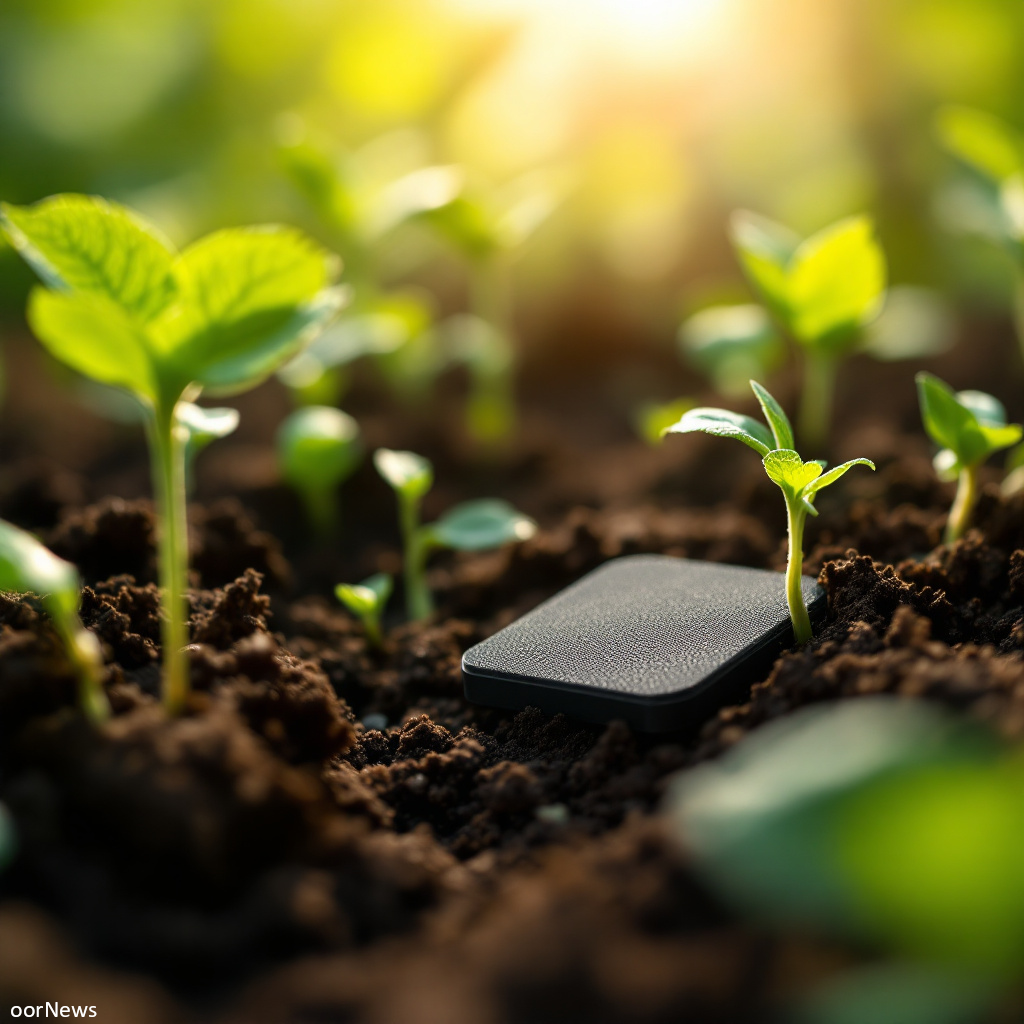Your cart is currently empty!

Biodegradable Soil Sensors Promise Greener, Smarter Farming

Engineers at the University of Glasgow have developed a ground-breaking screen-printed sensor that can be left to break down in soil after use. The sensor is meant to track soil traits such as pH and temperature. It is made from materials that, when they decay, serve as plant food.
The sensor is part of the international TESLA project. TESLA, short for Transient Electronics for Sustainable ICT in DigitaL Agriculture, is a £1.8m effort led by Glasgow. The project joins hands with McGill University in Canada, Tampere University and VTT Technical Research Centre of Finland Ltd, as well as the Łukasiewicz Research Network and CSEM in Switzerland. The team aims to build a full system where biodegradable patches work with solar cells, supercapacitors, and reworkable electronic modules to give a complete, eco-friendly solution for digital agriculture.
For the study, scientists used screen-printing—a method akin to that seen in t-shirt design—to form conductive tracks on a biodegradable plastic base using graphene-carbon ink. A layer of molybdenum disulfide is then printed over the top. In lab tests, the sensors showed steady results in solutions from pH 3 to pH 8 over two weeks. They were even able to note traces of ethephon, a chemical used to spur plant growth that may be harmful if it leaks into water.
“Reliable food production is one of the world’s most pressing problems, with more than 800 million people around the world suffering from malnutrition today. Digital agriculture could be the key to maximising our ability to produce enough food for a growing population,” said Dr Joseph Cameron of the James Watt School of Engineering.
Co-author Andrew Rollo spoke on the impact of the work. “The system we’ve developed could go a long way towards cutting down the carbon footprint of digital agriculture. The sensors themselves can be ploughed back into the fields to help nurture crops, and the electronic modules with less environmentally friendly printed circuit materials can be reused for several years. Our analysis suggested that replacing the sensors once every three months could reduce the environmental impact of the system by 66%, and 79% over five years compared to disposing of the entire device each time,” he explained.
Professor Jeff Kettle, who led the research, stressed the need for change. “We urgently need to find a way to make digital agriculture more sustainable in the years to come. Currently, around 80% of the world’s electronics head straight to landfill once they’ve reached the end of their useful life, which creates massive environmental and public health challenges from the toxic materials which many of them contain. We’re keen to continue expanding our biodegradable sensor’s ability to detect other key indicators of plant growth and soil health. That could include adding sensitivity to ‘forever chemicals’ like PFAs, which have significant environmental impact.”
The research, reported in ACS Applied Electronic Materials, brings a new approach to digital agriculture. The sensor patches work alongside conventional electronics. Together, they help farmers build a clear picture of crop health and soil conditions. By keeping the parts that cannot be composted for reuse, the setup lowers waste and cost while aiming to cut down the burden on nature. The work is supported by the Engineering and Physical Sciences Research Council and the São Paulo Research Foundation.
This new technology could light the way toward more efficient food production in a time when the demand for food is expected to rise steeply.